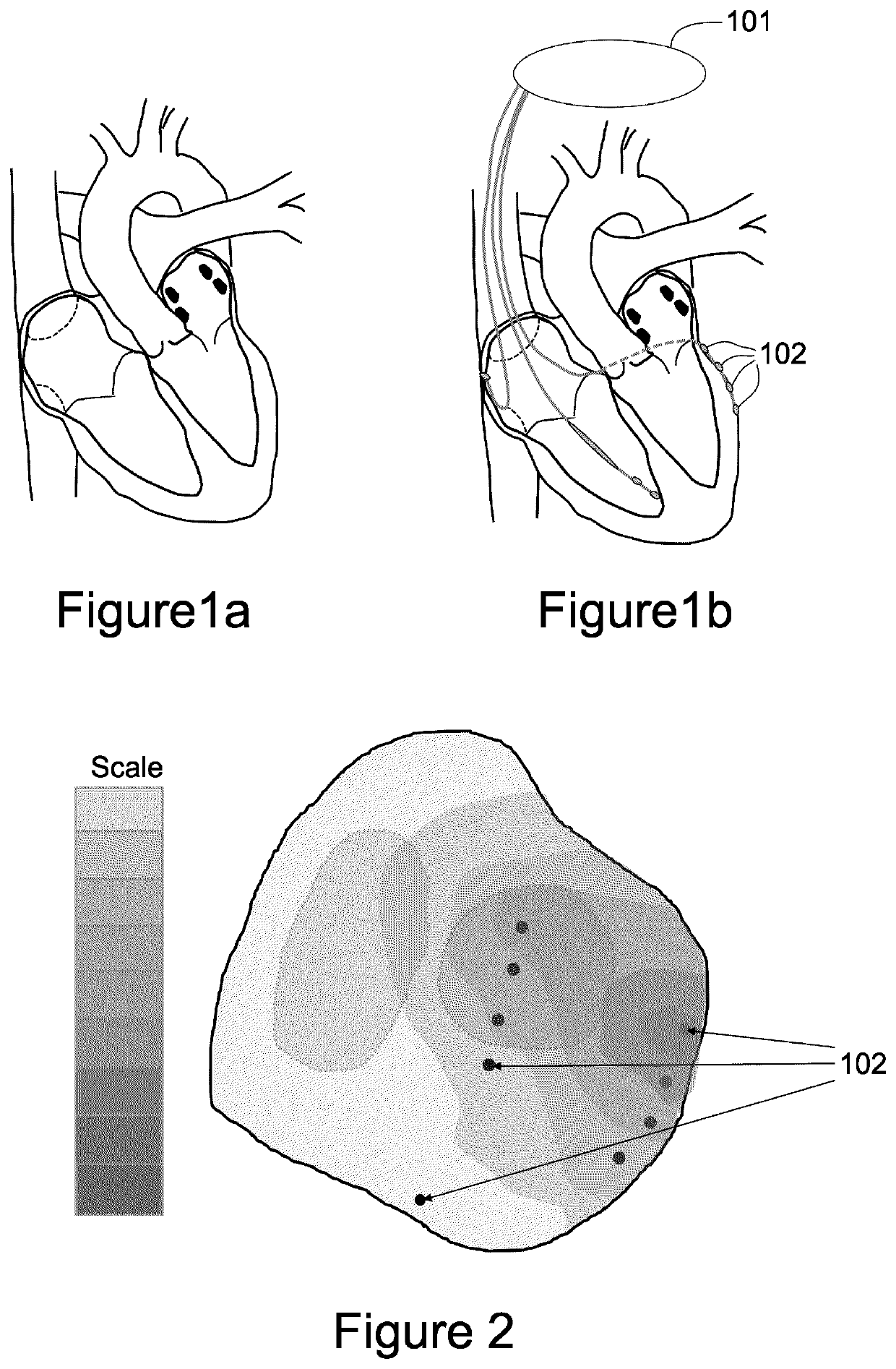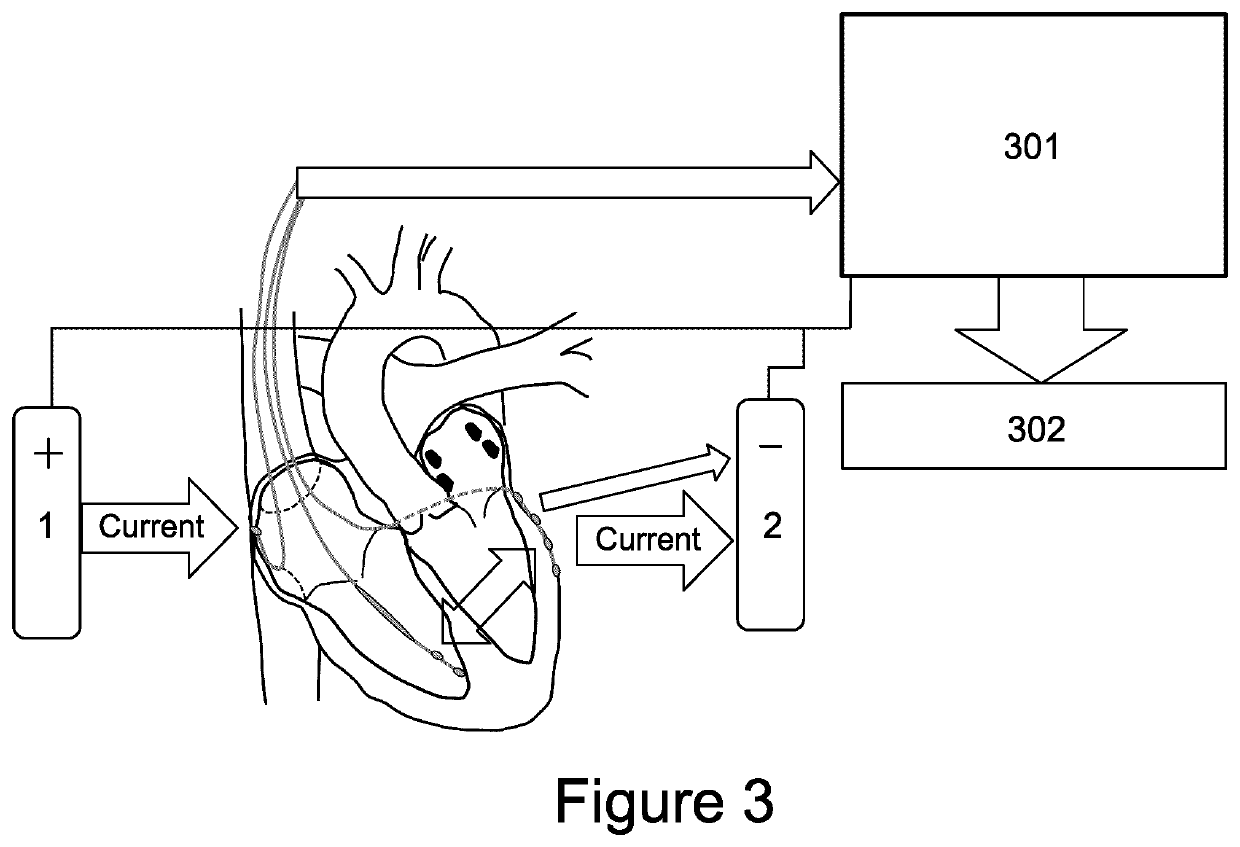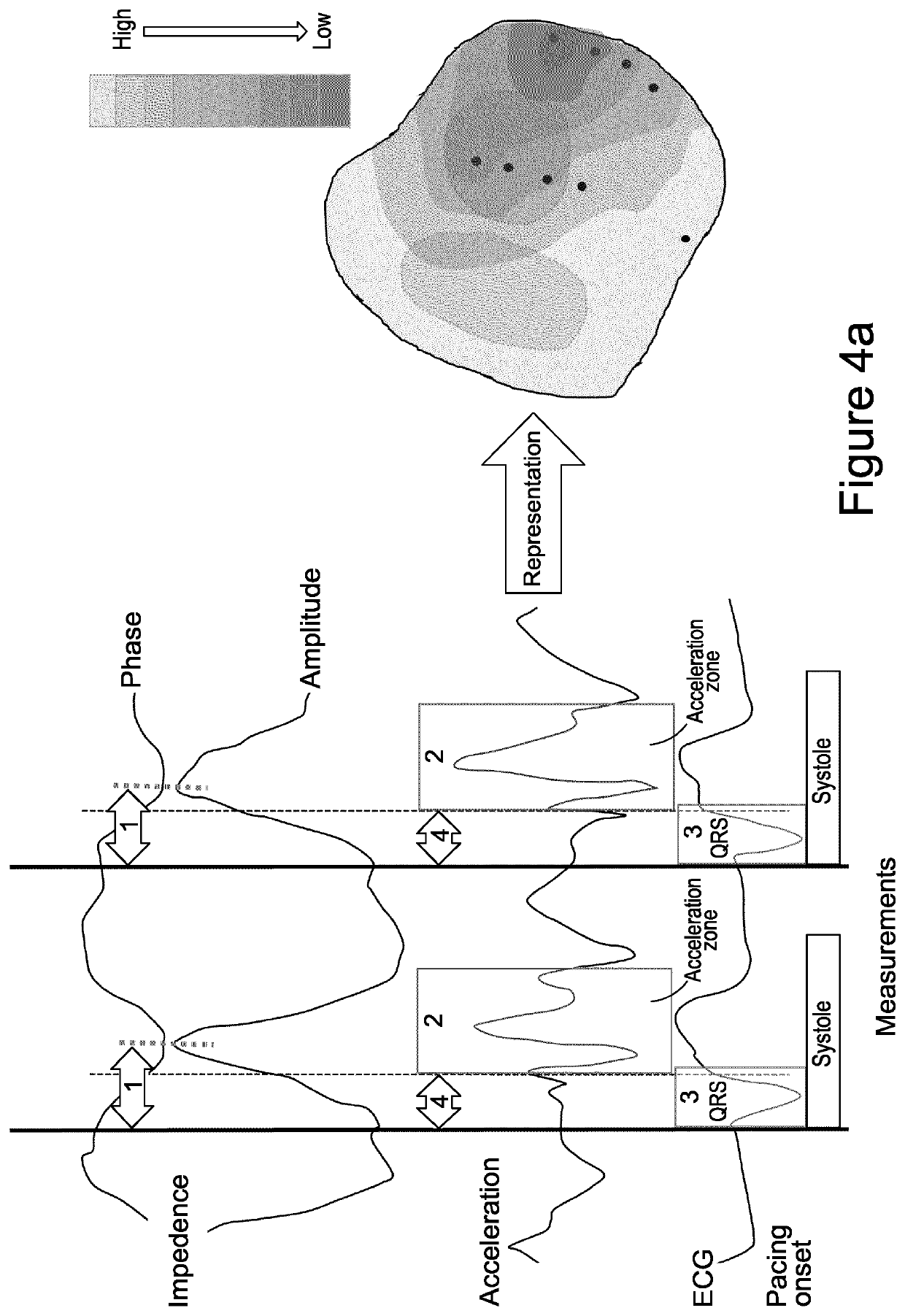Measuring time to fusion as a means of determining degree of parallel activation of the heart
a technology of parallel activation and measuring time, which is applied in the direction of angiography, therapy, artificial respiration, etc., can solve the problems of not all patients benefiting from such therapy, patients may experience deterioration, and morbidity
- Summary
- Abstract
- Description
- Claims
- Application Information
AI Technical Summary
Benefits of technology
Problems solved by technology
Method used
Image
Examples
example method
[0359]The systems and methods described herein may be used both before and during treatment of patients with presumably dyssynchronous heart failure, with a resynchronization pacemaker (CRT) in order 1) identify the presence of an underlying substrate that identifies patients that are likely to respond positively (manifest resynchronization potential present) to and 2) identify optimal locations for placement of pacing leads / electrodes.
[0360]Patients are currently referred for implantation of a CRT pacemaker based on international guidelines that describe indication criteria. These criteria are based on inclusion criteria in larger clinical trials and, amongst other things, consists of symptoms of heart failure, reduced ejection fraction (heart function) and a widened QRS complex (preferably left bundle branch block) beyond 120-150 ms. However, currently only 50-70% of patients with one or more indications for treatment with a CRT actually respond to treatment. Reasons for these non...
PUM
 Login to View More
Login to View More Abstract
Description
Claims
Application Information
 Login to View More
Login to View More - R&D
- Intellectual Property
- Life Sciences
- Materials
- Tech Scout
- Unparalleled Data Quality
- Higher Quality Content
- 60% Fewer Hallucinations
Browse by: Latest US Patents, China's latest patents, Technical Efficacy Thesaurus, Application Domain, Technology Topic, Popular Technical Reports.
© 2025 PatSnap. All rights reserved.Legal|Privacy policy|Modern Slavery Act Transparency Statement|Sitemap|About US| Contact US: help@patsnap.com



